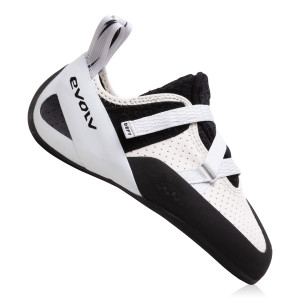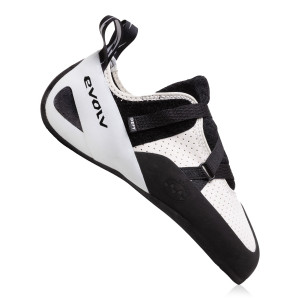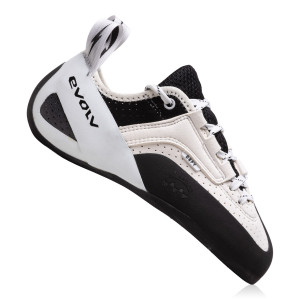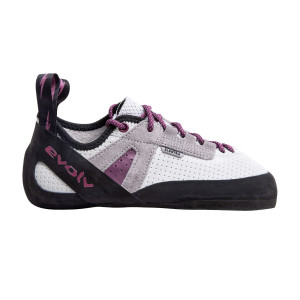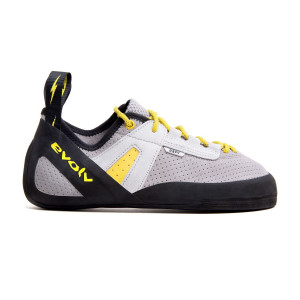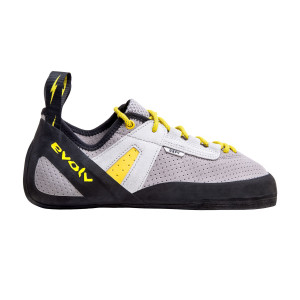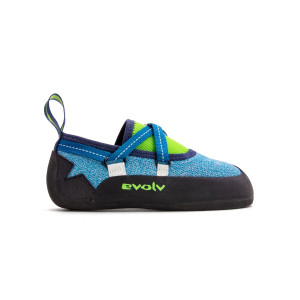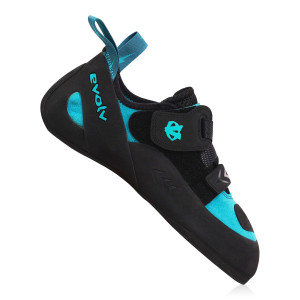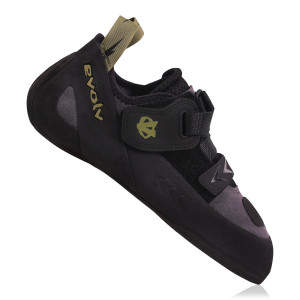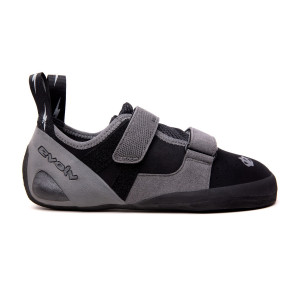Moderate Climbing Shoes - All-Around
(12)You only get to pick your first pair of climbing shoes once. These all-around moderate neutral climbing shoes will emphasize comfort while still providing a level of performance that will let you progress quickly and level up with your more experienced friend group. No matter where your climbing takes you, the memories you create with your first pair of climbing shoes will always stay with you. Even for an experienced climber, these climbing shoes are ideal for warm up. They’re also proficient with smears, edging and ideal for all size cracks while maintaining the overall comfort fit right out of the box. Choosing the right shoe: Consider your climbing style and goals. Moderate neutral shoes offer a good middle ground, but for more aggressive climbing, explore our downturned climbing shoe selection. Complete your climbing kit: Don't forget the essentials! Pair your new shoes with climbing chalk to improve grip and a chalk bag for easy access. For outdoor climbing, consider a crash pad for falls and a bouldering brush to keep your holds clean.
What are moderate climbing shoes?
Moderate climbing shoes are flat soles with slight asymmetrical toe box.
Moderate climbing shoes are in-between shoes as they have a slight camber: in-between because they are in the middle of a beginner and an advanced shoe. If you are not a beginner, but even an expert, moderate climbing shoes are the right choice, as they offer good performance, and you can easily wear them all day.
Should you get moderate or aggressive climbing shoes?
It depends on the level you are, as the shoes have different features, according to the style of climbing that suits you.
At a beginner level: it is recommended to start with moderate climbing shoes as they have added comfort. Starting with an aggressive climbing shoe can result in improper technique. Moderate shoes are perfect also for all-day climbing activities or long multi-pitch climbs.
If you are an advanced climber: searching for more overall performance, and more sensitivity, aggressive climbing shoes are the best choice. Remember that they are powerful and the shape is very downturned, it means they are more suitable for very technical climbs, but not for longer climbs.
When should you upgrade to moderate level climbing shoes?
Best time to upgrade to moderate climbing shoes is when you wear down your starting climbing shoes. It means about 8-12 months. At that time, you should have a fair understanding how foot works and technique works.
The need for more sensitivity on your climbing shoes is a clear sign to consider for upgrading to a moderate level climbing shoe, as you are approaching more difficult routes.
Moderate vs aggressive climbing shoes what is the difference?
Moderate versus aggressive climbing shoes are different in performance and shape. Moderate shoes are often full sole with a slight camber and no downturn toe box. Aggressive shoes are high camber and downturned toe box.
A moderate climbing shoe differs from the aggressive as it is more comfortable due to a slight cambered sole and a flat shape. If you are searching for a crack climbing shoe, or all-day comfort, it is advisable to choose a moderate shoe, as it is an intermediate one. The moderate stiffness of the midsole offers flexibility for crack climbs but stiff enough for edging.
An aggressive climbing shoe has a more downturned toe, giving you a better overall performance, thanks to the sensitivity it offers. Aggressive shoes are great for more advanced climbers.
How to choose the best moderate climbing shoes for you?
When you buy a moderate climbing shoe, you need to consider the main characteristics of a climbing shoe:
- Rubber and Outsole: the external material directly in contact with the rock. It can be harder, suitable for smearing, but at the same time it lasts less; it can be softer, ideal for smearing and it lasts longer.
- Rubber: Rubber density or stiffness/softness will determine the style of climbing. Stiff rubber is more suitable for edging on small edges or foot holds because of the density of the rubber will not flex or budge. Giving the user the confidence and assist to stand on small foot holds however the downside is the lack of stickiness. Whereas a softer rubber is stickier and more flexible for steeper angles/crack type climbs.
- Midsole: you need to consider it to have performance in terms of shoe stiffness. The midsole that is between the fabric material and rubber can either be stiff or soft which gives the shoe its unique characteristic. You need to choose between the stiffest or the softer midsole which affects your climbing style.
- Material: you can find leather shoes, or more environmentally friendly synthetic shoes or in other words vegan friendly. Material is based on preference but has up and downside to both materials. Leather is easier to stretch but will continue to stretch which will eventually affect the performance of the shoe as it becomes loose. Synthetic or Vegan leather does not stretch as easy as leather but will retain the shape of the performance fit as it was intended.
- Closures: shoes with laces are more comfortable where you can adjust the tightness at different points but harder to take off. While climbing shoes with Velcro is easier to take off and put on but you have only 1 to 3 points of adjustments.
And, of course, you need to choose the best fit for your foot shape, and the best choice for what usage of your climbing shoe you would do.


